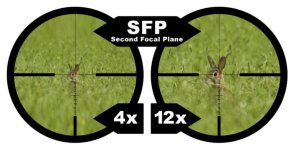krizia829
Senior Member
Can someone give me the easiest explanation as to the main difference between First Focal Plane and Second Focal Plane scopes?
I know the crosshair will change in size when magnifying, but other than that, what else would you say makes a significant difference? Especially to explain the price difference.
Also, what would you personally prefer for hunting? Not long-range target shooting.
Thank you!
I know the crosshair will change in size when magnifying, but other than that, what else would you say makes a significant difference? Especially to explain the price difference.
Also, what would you personally prefer for hunting? Not long-range target shooting.
Thank you!
Last edited:




